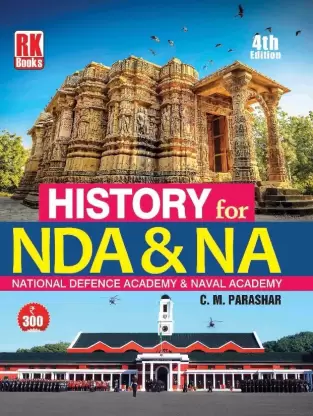
The Battle of Saragarhi, fought on September 12, 1897, is a story of exceptional bravery, selfless service, and leadership under extreme conditions. As an aspirant preparing for the National Defence Academy (NDA), Combined Defence Services (CDS), or Air Force Common Admission Test (AFCAT), this historical battle offers critical lessons that go beyond mere military history. It serves as an inspiration to future officers who will be expected to lead, serve with courage, and make tough decisions in the face of adversity.
Saragarhi was a small communication outpost between two forts—Fort Lockhart and Fort Gulistan—located in the rugged terrain of the North-West Frontier Province (now in Pakistan). Manned by 21 soldiers of the 36th Sikh Regiment, under the command of Havildar Ishar Singh, the outpost played a vital role in maintaining communication between the British forts.
On that fateful day in 1897, approximately 10,000 Afghan tribesmen launched an attack on Saragarhi, intending to break British lines. The Sikhs, though hopelessly outnumbered, decided to stand their ground and fight until the last man. Their courage and resolve under fire have since been immortalized in Indian military history.
Decisive Leadership Under Pressure
Havildar Ishar Singh’s decision to fight, knowing the odds were stacked against his men, reflects the essence of leadership in the armed forces. As future officers, you will be required to make quick, often difficult decisions that affect the lives of others. His unwavering commitment to duty and his leadership in battle remind us that an officer must stand firm, even in the face of overwhelming challenges.
Leading by Example
In military life, leading from the front is not just a principle; it is a way of life. Havildar Ishar Singh exemplified this by staying calm and composed under fire. He inspired his men to fight with courage, demonstrating that true leadership is not about orders but about setting an example. As an aspirant, your leadership skills will be tested during your training and service, and the story of Saragarhi is a powerful example of what it means to lead from the front.
Sacrifice for the Greater Good
The Battle of Saragarhi is a striking example of the ultimate sacrifice for a higher cause. All 21 soldiers laid down their lives to protect their fellow comrades and the larger mission of the British Indian Army. For NDA, CDS, and AFCAT aspirants, this teaches the critical value of selflessness and service before self—cornerstones of military ethos.
Mental and Physical Endurance
During the battle, the Sikh soldiers, despite being outnumbered by thousands, fought fiercely for hours. Their mental and physical endurance ensured that they could hold off the Afghan attackers long enough to send critical communications to the British forts. Military life demands the highest levels of both physical and mental strength, which will be put to the test in your exams, during training, and throughout your career. The Battle of Saragarhi showcases the indomitable spirit that you must cultivate.
Team Spirit and Brotherhood
The 21 soldiers at Saragarhi fought as a unit, knowing that each man’s life depended on the other’s bravery and actions. The Indian Army, Navy, and Air Force work in cohesive units where team spirit is paramount. Trusting your fellow soldiers, sailors, or airmen is essential, and the brotherhood seen in Saragarhi is a reminder of the tight-knit bonds that hold military units together, even in the direst circumstances.
Adaptability and Tactical Thinking
Though poorly equipped and facing an overwhelming force, the soldiers of Saragarhi used their environment to their advantage. They adapted quickly, defended their post with skill, and slowed down the advancing Afghan tribesmen. The ability to think on your feet, adapt to changing circumstances, and use your resources wisely are vital qualities that the NDA, CDS, and AFCAT exams test through problem-solving exercises, group tasks, and interviews.
The Battle of Saragarhi is not just a tale of military history but a timeless lesson for those aspiring to join the Indian Armed Forces. Here are the key lessons for aspirants:
The Battle of Saragarhi is a shining example of what the Indian Armed Forces stand for: courage, sacrifice, and unwavering dedication to duty. As you prepare for NDA, CDS, or AFCAT, let this story serve as a reminder of the responsibility you carry as future defenders of the nation. The lessons of Saragarhi will not only help you in your exams but also shape you into the leader the country needs.
In the words of Field Marshal Sam Manekshaw, “If a man says he is not afraid of dying, he is either lying or is a Gurkha.” While he mentioned Gurkhas, the spirit applies to the Sikh soldiers at Saragarhi too, who were ready to face death with a smile on their faces and pride in their hearts—an inspiration for all who aspire to serve India.
Here are some multiple-choice questions (MCQs) on The Battle of Saragarhi with explanations for NDA, CDS, and AFCAT aspirants:
a) September 12, 2022
b) September 12, 2023
c) September 12, 2024
d) September 12, 2025
Answer: c) September 12, 2024
Explanation:
The Battle of Saragarhi took place on September 12, 1897. The 127th anniversary was observed on September 12, 2024, honoring the heroic stand of 21 Sikh soldiers against thousands of tribal militants.
a) 50 soldiers
b) 21 soldiers
c) 36 soldiers
d) 100 soldiers
Answer: b) 21 soldiers
Explanation:
The Battle of Saragarhi was fought by 21 soldiers of the 36th Sikh Regiment, who, along with a non-combatant named Daad, made a valiant stand against over 8,000 Afghan tribal militants in 1897.
a) Major General Zorawar Singh
b) Havildar Ishar Singh
c) Sepoy Gurmukh Singh
d) Subedar Joginder Singh
Answer: b) Havildar Ishar Singh
Explanation:
Havildar Ishar Singh led the 21 Sikh soldiers in their heroic defense of Saragarhi, commanding them through seven hours of intense combat before the post was overrun.
a) 3 hours
b) 5 hours
c) 7 hours
d) 12 hours
Answer: c) 7 hours
Explanation:
The battle lasted for seven hours, during which the 21 Sikh soldiers fought valiantly against overwhelming numbers, inflicting significant casualties on the attacking forces.
a) It was a supply depot for British troops
b) It was a training ground for British soldiers
c) It served as a communication tower between Fort Lockhart and Fort Gulistan
d) It was a forward base for attacking Afghan tribes
Answer: c) It served as a communication tower between Fort Lockhart and Fort Gulistan
Explanation:
Saragarhi was a critical communication post that relayed signals between Fort Lockhart and Fort Gulistan, both important British forts in the North-West Frontier Province (now in Pakistan).
a) The loss of a supply route
b) The isolation of Fort Lockhart and Fort Gulistan
c) A direct threat to British colonial administration
d) A signal for retreat
Answer: b) The isolation of Fort Lockhart and Fort Gulistan
Explanation:
Losing Saragarhi would mean isolating Fort Lockhart and Fort Gulistan, leaving the British troops and their families stationed at these forts vulnerable to attack from the surrounding tribal forces.
a) An award for administrative excellence
b) A medal given to Indian soldiers for bravery, comparable to the Victoria Cross
c) A civilian award for contributions to education
d) A posthumous award for social service
Answer: b) A medal given to Indian soldiers for bravery, comparable to the Victoria Cross
Explanation:
The Indian Order of Merit was the highest military award given to Indian soldiers during British rule, equivalent to the Victoria Cross. The 21 Sikh soldiers at Saragarhi were posthumously awarded this medal for their bravery.
a) A fort
b) An obelisk
c) A statue
d) A memorial museum
Answer: b) An obelisk
Explanation:
The British built an obelisk using burnt bricks from Saragarhi to honor the 21 Sikh soldiers who died defending the outpost, commemorating their bravery and sacrifice.
a) 1947
b) 1984
c) 2017
d) 2020
Answer: c) 2017
Explanation:
In 2017, the Punjab government officially declared September 12 as Saragarhi Day, a public holiday to honor the sacrifice of the 21 Sikh soldiers who fought in the Battle of Saragarhi.
a) Khyber Scouts
b) Punjab Regiment
c) Frontier Corps
d) 9th Baloch Regiment
Answer: a) Khyber Scouts
Explanation:
The Khyber Scouts regiment of the Pakistani Army continues to honor the martyrs of Saragarhi, paying tribute with a guard and salute at the memorial near Fort Lockhart.
These MCQs help NDA, CDS, and AFCAT aspirants understand the historical significance and key details of the Battle of Saragarhi, reinforcing the values of courage, sacrifice, and leadership essential for military service. The explanations provide context, ensuring clarity on important aspects of the battle.





© 2024 | The Tutors Academy | Website Conceptualised and Developed by Promotion Paradise
